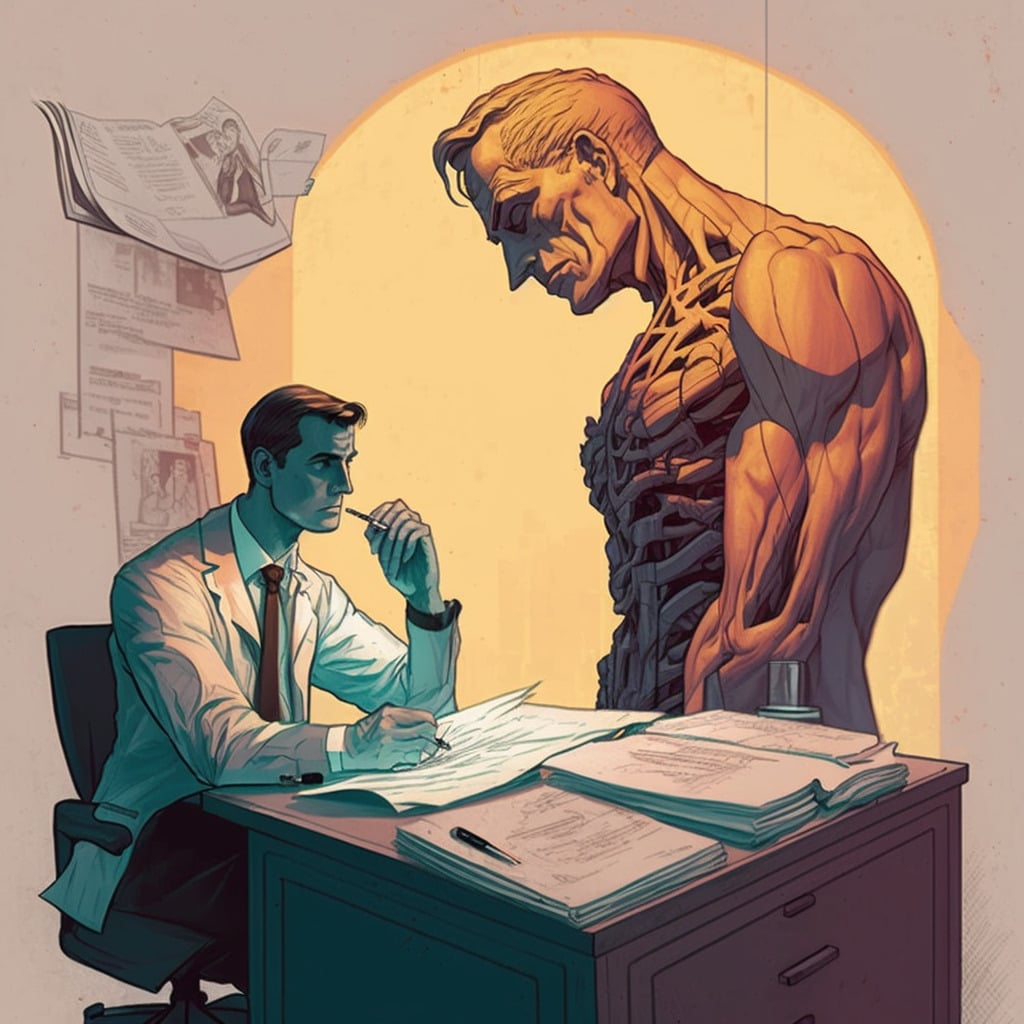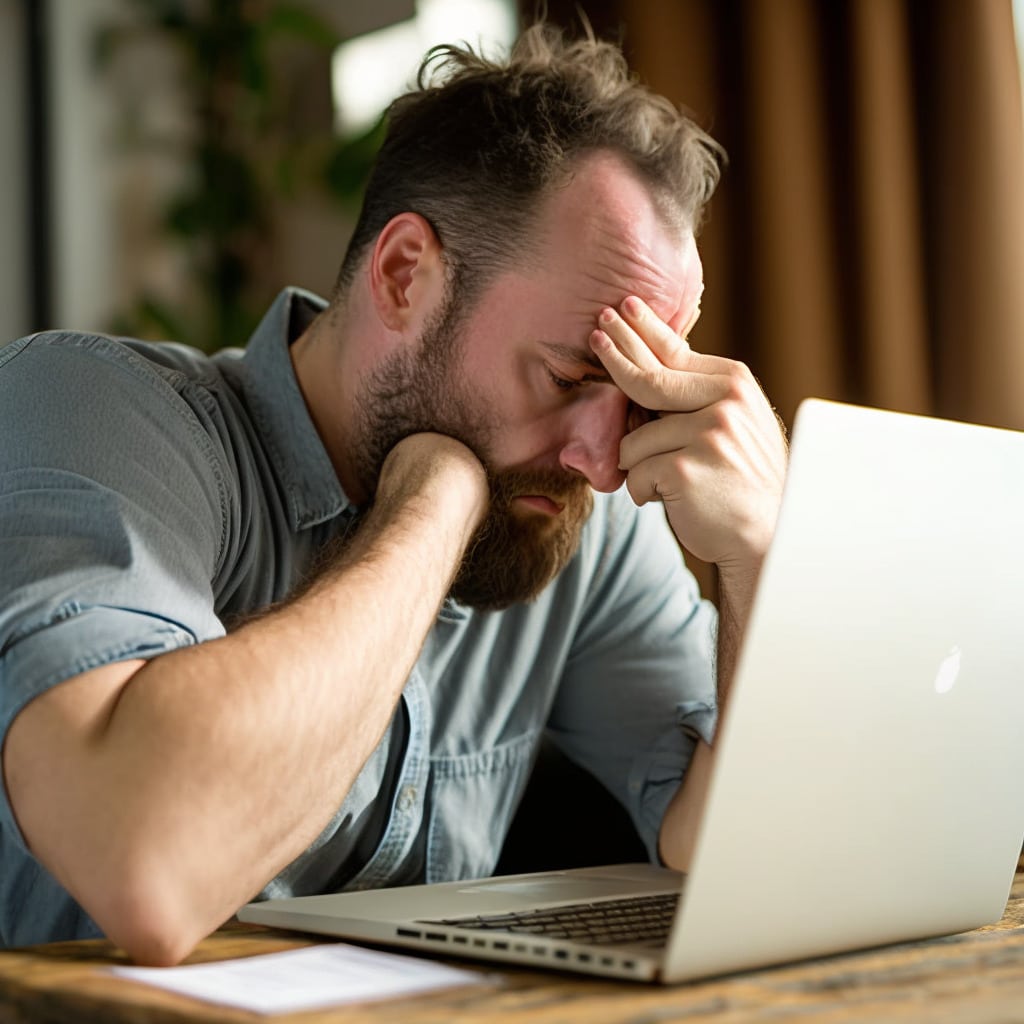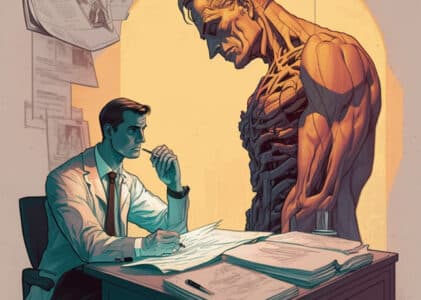Symptoms Of Piles in Males
Early symptoms of piles in males, (also known as hemorrhoids,) are swollen and inflamed veins in the anal canal. They can often cause pain and discomfort for men, who may experience symptoms such as itching and bleeding.

This article will discuss the common signs and symptoms of piles in male patients, providing useful information to help them better manage their condition.
The impact of piles on a man’s quality of life should not be underestimated. Symptoms can range from mild irritation to extreme physical pain and disability – making it difficult to carry out everyday activities.
This is why early recognition of the warning signs is essential so that appropriate treatment can be sought before the condition becomes more severe.
Finally, understanding how men are likely to respond when faced with this problem is key for medical practitioners looking to provide effective care for their patients suffering from piles.
By becoming familiar with typical behaviors associated with piles in males, healthcare professionals can ensure they deliver compassionate support tailored specifically to an individual’s needs.
Common Indicators
Piles, also known as hemorrhoids, are swollen veins in the rectum or anus. They affect millions of people around the world and can cause a variety of symptoms. Common indicators include internal piles symptoms such as anal itching, pain while passing stools, and rectal bleeding; external piles symptoms such as swelling around the anus and pain relief for piles; and general discomfort in the area.
In some cases, these signs may be accompanied by fever, nausea, diarrhea, or vomiting. Depending on the severity of the condition, physical signs and symptoms may follow.
Physical Signs and Symptoms
Physical signs and symptoms of piles in males are often the most common indicators that a diagnosis is needed. These can include itching, burning, soreness, or swelling around the anus. Painful lumps may also be present near the anal area.

Bleeding during bowel movements can also be an indicator of hemorrhoids. Other physical signs and symptoms to look out for include discomfort while sitting, difficulty controlling gas or stool, and leakage of faecal matter.
When it comes to treatment options for piles in men, there are several non-invasive options available such as cold compresses or over-the-counter medications like creams and ointments. In more serious cases, infrared coagulation or sclerotherapy may be necessary to eliminate existing hemorrhoids or reduce their size and severity.
Home remedies like taking warm baths with Epsom salts have been known to provide short-term relief from pain and inflammation associated with piles. However, these treatments should only be used after consulting a doctor about proper diagnosis and management plan for your particular situation.
Causes Of Piles in Males
They occur when veins in the anal area become swollen and inflamed. Causes of piles in males can vary greatly; however, some of the most frequent causes include straining during bowel movements, constipation and prolonged sitting on the toilet.
1. Straining during bowel movements: This is one of the main contributing factors to developing piles as it increases pressure within the veins near the anus.
2. Constipation: This can also lead to excessive pressure being placed on these veins due to hard stools that require more force to pass through them while eliminating waste from the body.
3. Prolonged Sitting on Toilet: When an individual sits for longer periods of time on the toilet rather than standing up immediately after finishing their elimination process, this places additional strain on their lower rectal walls which can contribute to swelling or prolapsed hemorrhoids over time.
4. Hemorrhoid Grading: Grade 1-3 refer to internal hemorrhoids whereas grade 4 refers to external ones that have prolapsed outside of the anus itself and may be visible or felt upon inspection even without invasive medical procedures being performed beforehand.
In addition to these common causes, there are other conditions such as obesity or pregnancy that can increase an individual’s risk for developing piles due to increased levels of abdominal pressure exerted onto veins near the anal region.
These cases should be discussed with a physician before taking any form of self-treatment options into consideration as treatment varies depending upon each individual case’s severity level and underlying cause(s).
Treatment Options
The symptoms of piles in males can range from mild to severe. Depending on the severity, treatment options may include over the counter remedies such as hemorrhoid creams and ointments, dietary changes for improving hydration levels, exercise, or even surgery.

For more mild cases of piles in male individuals, relief can often be found with at home treatments like increased hydration habits and dietary adjustments. Eating a diet that is high in fiber helps keep stools soft and prevents further irritation of the anal area.
Adequate hydration also helps to prevent constipation which can exacerbate symptoms of piles. Exercise is an important part of any health regimen and should not be overlooked when dealing with this condition. Gentle stretching exercises are recommended to help improve circulation and reduce pressure around the rectal region.
Alternative treatments that could provide additional relief include herbal supplements containing natural ingredients like witch hazel, horse chestnut extract, aloe vera gel, myrrh oil and yarrow flower extract. These herbs have been traditionally used to heal wounds and inflammation associated with piles in men due to their anti-inflammatory properties. It is advisable to always speak with your doctor before starting any alternative forms of treatment for a medical condition.
In some instances where pain or bleeding persists despite other methods being employed, surgical intervention might be necessary.
Hemorrhoidectomy is one common procedure performed by surgeons specializing in colorectal disorders; however, there are other less invasive techniques available that involve minimal recovery periods such as laser therapy or sclerotherapy injections into affected areas.
Surgery should only ever be done after discussing all possible risks and benefits with your healthcare provider.
To avoid developing issues related to piles it is important to practice preventive measures such as eating a well-balanced diet rich in fiber, drinking plenty of fluids throughout the day and exercising regularly as these habits will help promote overall wellness while reducing risk factors associated with this condition.
Prevention Tips
It may be ironic that the best way to prevent piles is by understanding what causes them in the first place. However, with knowledge comes power and prevention of this medical condition can become a reality. Here are some tips to help reduce your risk:
* Increase fiber intake through high fiber foods such as fruits and vegetables.
* Stay hydrated with plenty of water throughout the day.
* Exercise regularly to maintain a healthy weight.
* Avoid straining on the toilet for long periods of time when trying to go.
In addition to these general lifestyle changes, there are specific products available that provide hemorrhoid support or even act as coping strategies when dealing with piles symptoms. These include creams, suppositories, wipes, ointments and more, all designed to relieve discomfort associated with piles complications.
If you find yourself experiencing persistent pain despite lifestyle modifications, it’s important that you seek professional medical advice from your doctor so they can assess if additional treatments are needed.
Piles Cure in 3 Days: True or False?

The claim of a complete piles (hemorrhoids) cure in just three days may seem enticing, but it’s essential to approach such promises with skepticism. While some individuals may experience significant relief from their symptoms within a short period, completely curing hemorrhoids in such a limited time frame is unlikely.
Hemorrhoids are a complex condition with various underlying causes, and the severity and type can differ from person to person. Therefore, it’s crucial to seek a comprehensive, personalized approach to treatment, such as the Ultimate Hemorrhoid Relief Program.
While it’s natural to hope for a quick fix, long-term success in overcoming hemorrhoids requires patience, persistence, and a commitment to making lasting lifestyle changes that address the root causes of the issue.
Summing it up.
The symptoms of piles in males can be very uncomfortable and even embarrassing. It is important to recognize the signs and seek prompt medical attention when experiencing any of these indicators. To avoid further complications, it’s essential to understand the causes and how best to treat them.
Treating this condition requires a tailored approach based on individual needs. Your doctor may suggest lifestyle changes such as exercising regularly or increasing fiber intake, taking over-the-counter medications like stool softeners, or using topical cream for relief from itching and discomfort. In more severe cases, surgery may be necessary – but only after other options have been exhausted.
Overall, managing piles can be like climbing a mountain: difficult at times with obstacles along the way, but rewarding once you reach the summit! Taking proactive steps towards prevention will help ensure that your experience is as smooth and painless as possible – so don’t hesitate to speak with your healthcare provider if you’re concerned about potential risk factors or warning signs.
FAQs
What are the symptoms of piles in males, and what are the available treatments?
Piles, also known as hemorrhoids, can manifest differently in individuals, but males often experience similar symptoms. These may include itching, discomfort, pain around the anus, swelling or lumps near the anus, and occasional bleeding during bowel movements.
To treat piles effectively, a multi-faceted approach is recommended. Begin with conservative home remedies, such as over-the-counter creams, warm sitz baths, and incorporating a high-fiber diet to ease bowel movements.
Additionally, staying hydrated and engaging in regular exercise can help alleviate symptoms. In more severe cases, medical interventions such as rubber band ligation, sclerotherapy, or surgical procedures might be necessary. Consult your healthcare provider to determine the most appropriate treatment plan for your specific condition.
Can piles go away on their own?
It is possible for mild piles to resolve on their own, particularly if you make healthy lifestyle changes that alleviate the contributing factors. Increasing your fiber and water intake, maintaining good hygiene, and avoiding excessive straining during bowel movements can promote healing.
However, in cases where piles are severe or persistent, medical intervention may be required. It’s essential to monitor your symptoms and seek professional advice if they worsen or fail to improve over time.
How can I check if I have piles
To determine if you have piles, start by performing a self-examination. Gently feel the area around your anus, noting any swelling, lumps, or discomfort. Visible or palpable lumps, along with symptoms like itching, pain, and bleeding during bowel movements, can be indicative of piles.
However, self-diagnosis isn’t fool proof, and it’s crucial to consult a healthcare professional for an accurate assessment. A doctor will conduct a physical examination and may perform additional tests, such as a digital rectal exam or anoscope, to confirm the presence of piles and recommend appropriate treatment options.


